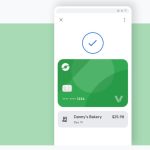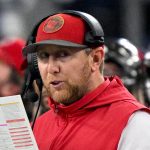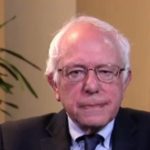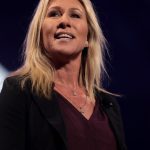Christophe Gateau: picture alliance via Getty Images
- Elon Musk is defending Tesla’s 2016 acquisition of SolarCity in court.
- SolarCity was founded by Musk’s cousins, and some shareholders say the acquisition was a bailout.
- Once the top installer of solar panels in the US, SolarCity was turned into Tesla Energy.
- See more stories on Insider’s business page.
Five years ago Tesla bought SolarCity, the biggest installer of residential solar panels in the US. Tesla CEO Elon is now having to defend that decision against shareholders, who claim the acquisition amounted to a bailout.
If Musk loses, he’ll be liable to pay up to $2.6 billion back to Tesla. Although this would make up only a fraction of Musk’s fortune – at time of writing his net worth stands at $179 billion per the Bloomberg Billionaires Index – Wedbush analyst Dan Ives said the case is a “black eye” for Tesla and could do serious reputational damage.
The case hinges on whether Musk exerted undue influence over Tesla’s board, and whether he misrepresented SolarCity’s financial health. Originally, the suit targeted the whole Tesla board as well as Musk, but the other board members agreed to an out-of-court settlement for $60 million in January 2020.
Musk’s appearances in the witness box this week were characteristically bombastic, with the Tesla CEO throwing personal insults at the plaintiffs’ lawyer and claiming his sense of humor drives sales. As part of his defense, Musk said the acquisition of SolarCity was part of a master plan.
“The goal is not to be a car company. There are plenty of car companies, but an electric car company is part of a sustainable energy future, as is solar and stationary storage,” Musk said, per the Wall Street Journal.
After the 2016 acquisition SolarCity was transformed into Tesla Energy, which has had to contend with multiple lawsuits, solar panel fires, and production problems.
How SolarCity became Tesla Energy:
REUTERS/Rashid Umar Abbasi
Musk’s cousins founded SolarCity at his suggestion, and Musk injected $10 million into the project himself.
The company initially enjoyed success, and in 2013 became the top residential installer for solar panels in the US, according to solar panel comparison site Energy Sage.
Its stock peaked in February 2014 at $88.35 a share — but then it began to go downhill.
SolarCity ran into major problems in 2015.
Ed Andrieski / Associated Press
In October 2015, a quarter of SolarCity’s value got wiped out, meaning it lost its “unicorn” status (a unicorn is a company valued at more than $1 billion).
The sudden drop in its value came after Lyndon Rive said the company would have to focus on cutting costs, as its rapid growth meant it had sunk a lot of money into infrastructure that wouldn’t make it any cash in the near future.
“The downside of growing at 80% or 90% is you have to make investments into the infrastructure today, but you only recognize the benefit of that investment two quarters to three quarters later,” Rive said.
Documents obtained by shareholder lawsuits revealed executives thought the company was facing a cash crisis as early as September 2015.
SolarCity announced Tesla had offered to buy it for $2.6 billion in August 2016.
NurPhoto/Contributor/Getty Images
SolarCity said in an official blog post on August 1, 2016, that Tesla had made an all-stock offer on June 21.
“Now is the right time to bring our two companies together: Tesla is getting ready to scale our Powerwall and Powerpack stationary storage products and SolarCity is getting ready to offer next-generation differentiated solar solutions,” SolarCity’s blog said.
The deal was approved by Tesla’s shareholders in November 2016. At the time of the acquisition, Elon Musk owned a 22% stake in SolarCity.
When Tesla bought SolarCity, it took on $3 billion in debt.
As Insider’s Matthew DeBord wrote at the time, SolarCity had $3.2 billion in debt when Tesla acquired it. Its market cap had also fallen by 50% in the year leading up to the acquisition.
Although Elon Musk argued in court this week he didn’t think SolarCity was “financially troubled” when Tesla acquired it, court documents unsealed in 2019 show Musk emailed former SolarCity finance chief Brad Buss, saying SolarCity would need to solve its “liquidity crisis” to win over investors.
A regulatory filing showed SolarCity had started 2016 with 15,273 staff but by the end of 2016, it had 12,243.
The Rive brothers left less than a year after the acquisition closed.
Eddie Jim/Fairfax Media via Getty Images
Lyndon Rive announced in May 2017 he would be leaving Tesla in June.
He told employees in a letter he was an “entrepreneur at heart,” and wanted to leave to build a new startup. Rive told Reuters at the time SolarCity was “healthier than it’s ever been.”
Peter Rive, Lyndon’s co-founder and CTO, left the company in July 2017. In an internal letter published by Green Tech Media, Rive said he had decided to “take a break and focus on some other projects.”
“I plan to spend more time exploring the outdoors, more time with my family, and helping non-profit solar projects in the developing world,” Rive added.
In 2018, Tesla Energy had to deal with a major PR crisis when Tesla solar panels on top of seven Walmarts caught fire.
Walmart filed a lawsuit against Tesla in August 2019 claiming the fires were the result of “widespread negligence” on Tesla’s part.
After Walmart filed the case Amazon came forward to say solar panels on top of its Redlands, California warehouse had caught fire in June 2018. The retail giant said it would not be installing any more solar panels.
Walmart dropped the lawsuit three months later after reaching an out-of-court settlement with Tesla, a Walmart spokesperson said. The details of the settlement were not disclosed.
In August 2019 Insider’s Linette Lopez reported Tesla had rolled out a stealth replacement program for faulty solar panels in summer 2018, codenamed “Project Titan.”
Since SolarCity became Tesla Energy it’s brought out two big flagship products: the Powerwall and the Solar Roof.
Tesla
While Tesla Energy has continued to sell the traditional solar panels SolarCity used to install — which are made by third-party manufacturers such as Trina Solar — it has brought two new products to market since the acquisition.
The first was its Powerwall storage battery, designed to store energy generated by a customer’s solar system so even if the power goes down in their neighbourhood they’ll have access to power.
It’s not entirely clear whether development on the Powerwall began before or after the acquisition. Tesla gave a preview of the storage battery at an event in May 2015, but in testimony on Tuesday Musk said development of the Powerwall was “beginning” when the acquisition happened in 2016.
“We were beginning development of the Tesla Powerwall battery. And in order to have a compelling product, you really needed to have a tightly integrated solar and battery solution. And we could not create a well-integrated product if SolarCity was a separate company,” Musk told the court.
The second is the Solar Roof, which instead of bolting panels on top of a customer’s roof replaces the entire roof with photovoltaic shingles.
Musk debuted the Solar Roof in October 2016 during a glitzy event on a house from the show “Desperate Housewives.”
“It needs to be beautiful, affordable and seamlessly integrated,” Musk said at the unveiling event, adding: “You’ll want to call your neighbors over and say, ‘check out this sweet roof.'”
Depositions from Tesla executives later revealed the tiles Musk had shown off at the event hadn’t been operational.
Tesla did not start actually installing Solar Roof until 2019. In a deposition, Musk said this was because Tesla had to divert resources away from Tesla Energy to focus on the Model 3 production ramp.
Tesla raised the price of the Solar Roof in April 2021. Musk said this was because the company had made “significant mistakes.”
Customers who had already signed contracts for a Solar Roof but had not yet had one installed reported in April the company had jacked up the prices on their roofs. One customer who had his contract raised from $71,000 to $146,000 filed a class-action lawsuit against Tesla.
Musk addressed the price hike in Tesla’s 2021 Q1 earnings call, saying “we did find that we basically made some significant mistakes in assessment of difficulty of certain roofs.”
Musk said roof complexity made it hard to price them accurately. “If a roof has a lot of protuberances, or if the roof — sort of the core structure of the roof is rotted out or is not strong enough to hold the Solar Roof, then the cost can be double, sometimes three times what our initial quotes were,” he said.
Tesla also made buying a Powerwall a compulsory package deal when buying a solar system in April.
Andrew Francis Wallace/Toronto Star via Getty Images
Elon Musk announced the policy change via a tweet. “Solar power will feed exclusively to Powerwall. Powerwall will interface only between utility meter & house main breaker panel, enabling super simple install & seamless whole house backup during utility dropouts,” Musk said.
The tweet appeared to be in response to a customer who complained on Twitter their system hadn’t generated a “single watt-hour.”
Tesla Energy has fallen behind competitors since SolarCity’s heyday. Musk blames the Model 3, the pandemic, and the global chip shortage.
Britta Pedersen-Pool/Getty Images
While SolarCity was once number one in the US for residential solar installs, in Q1 of 2019 it slipped to number three below rivals Sunrun and Vivint Solar. Sunrun acquired Vivint in October 2020, consolidating its market share.
During his testimony before the Delaware Court of Chancery on July 12, Musk said Tesla Energy’s progress was hampered by the notoriously difficult production ramp on the Model 3 car. Musk said in his testimony and in depositions the company had to pour all its resources into getting the Model 3 to market — meaning its energy operation suffered.
After that, Musk said, the company ran “headlong into a pandemic.”
Musk continued his testimony on July 13, and added the global semiconductor chip shortage had impacted production of the Powerwall. He said while demand was around 80,000 units, the company would only be able to make a maximum of 35,000 in the next quarter.
Do you work at Tesla Energy or are you a Tesla Energy customer? Contact this reporter at ihamilton@insider.com or iahamilton@protonmail.com. If you are an employee always use a non-work email.
Powered by WPeMatico






